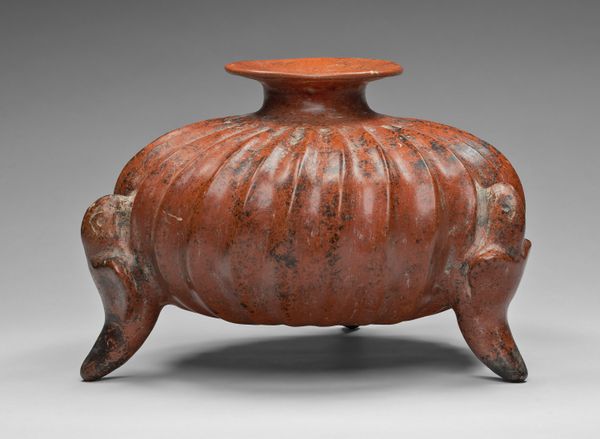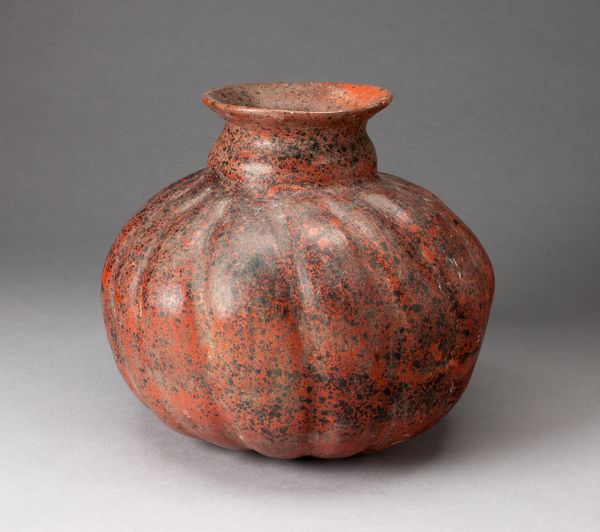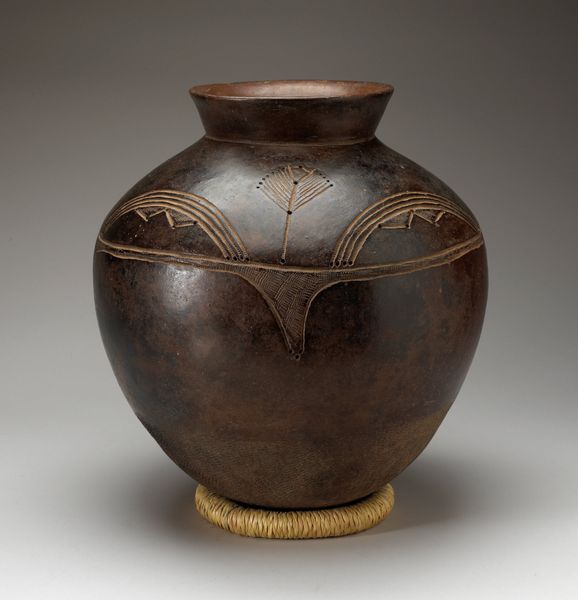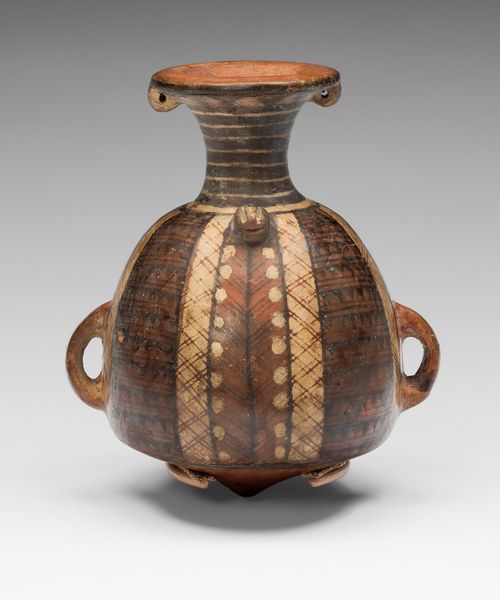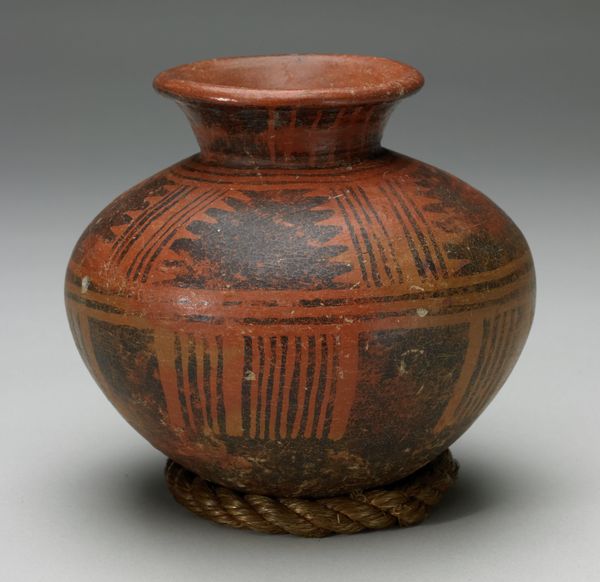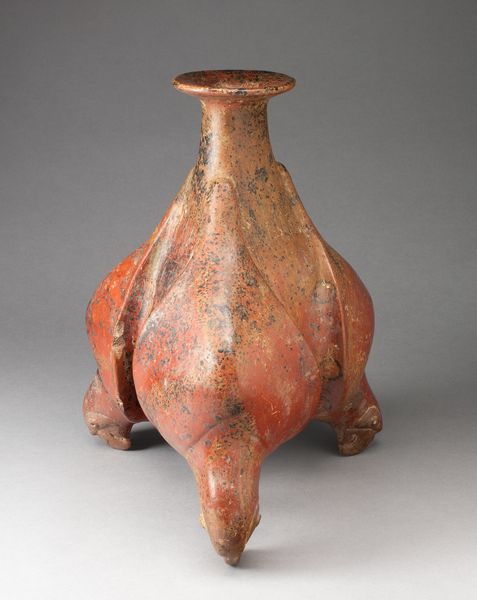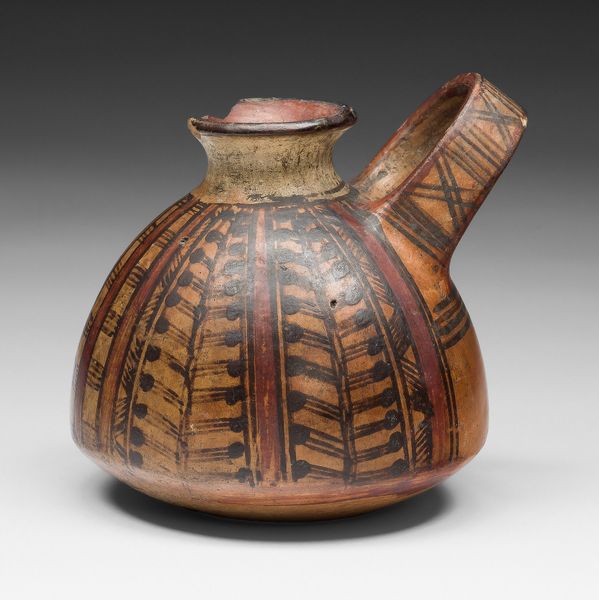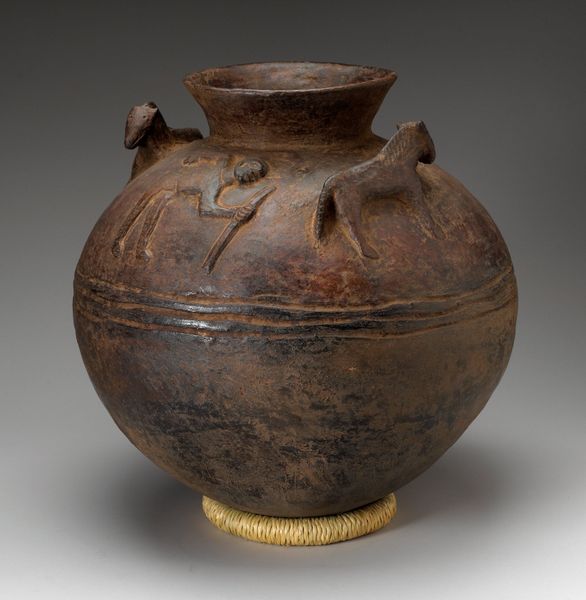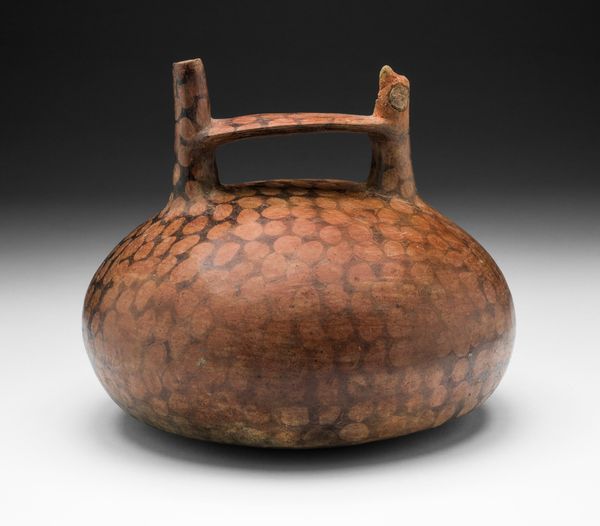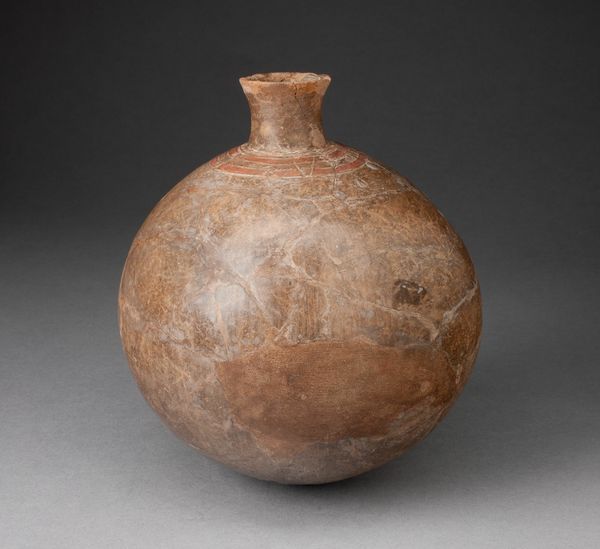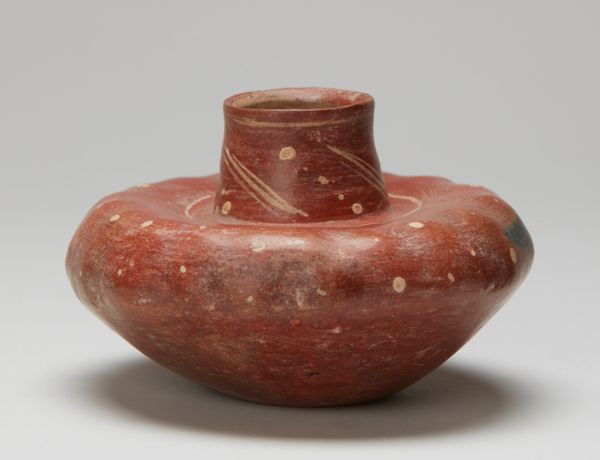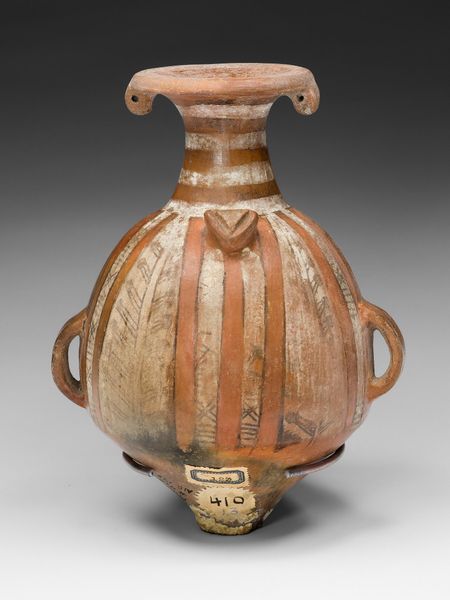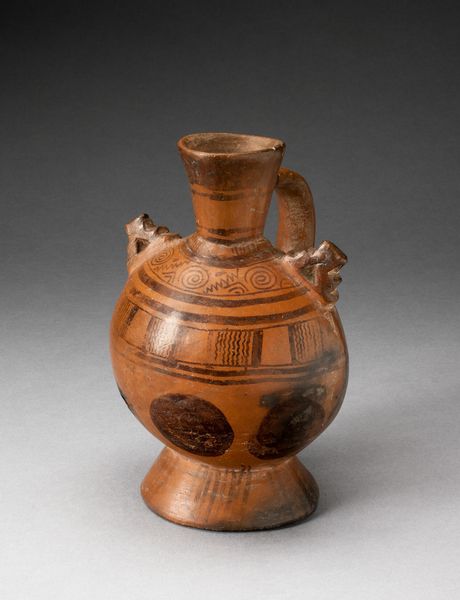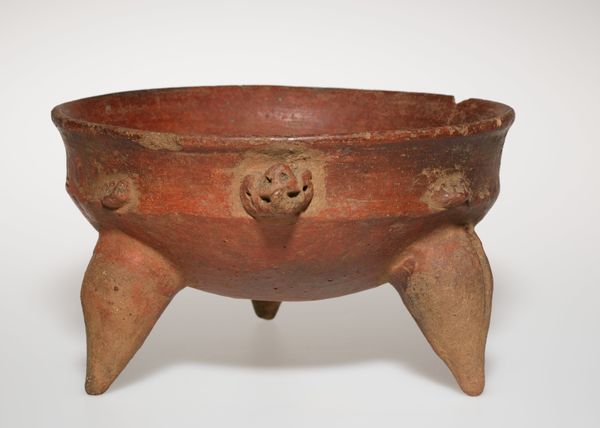
ceramic, earthenware, sculpture, terracotta
#
ceramic
#
figuration
#
form
#
earthenware
#
sculpture
#
terracotta
#
indigenous-americas
Dimensions: 23.2 × 32.4 cm (9 1/8 × 12 3/4 in.)
Copyright: Public Domain
Curator: Here we have an extraordinary ceramic work: a Vessel in the Form of a Calabash. Attributed to the Colima culture, it likely dates back to between 1 and 200 AD. Editor: It feels simultaneously grounded and whimsical! Like a friendly, terracotta creature ready to waddle off. Is it just me, or does it exude a kind of earthy playfulness? Curator: Not just you! These vessels held significance beyond their utilitarian purpose. Consider the social role of feasting in ancient Colima. It likely served ritual purposes and conveyed social status and identity through its striking design and form. Editor: Those stout little bird legs holding up what looks like a pumpkin! Or perhaps it is gourd-like, recalling fruits of the earth. The symmetry gives it weight and, surprisingly, dignity, even as its stance feels somewhat precarious. It's endearing! Curator: Indeed. The calabash, or gourd, itself symbolizes fertility and abundance. Its representation here in earthenware links agricultural prosperity to social power within the Colima communities. These works are sometimes recovered from tombs, giving clues about ritual and cultural contexts in that specific community. Editor: It makes me wonder about the artist’s process. Did they start with the form of the fruit itself, abstracting and amplifying it, or did the addition of those delightful bird-legs spark the whole design? The surface is mottled with these mysterious dark marks as though aged, and this effect enhances the form’s visual weight. I'm charmed by the balance of representation and pure imaginative flair. Curator: These dark patches are a result of the firing process that used pits or underground kilns. The firing atmosphere deprived of oxygen produced a visual effect unique to this regional culture. I agree, and this ancient artwork demonstrates a sophisticated understanding of visual communication and symbolism. Editor: To think that something so enduringly cheerful was crafted millennia ago. Art, as a persistent reminder that human ingenuity is evergreen, isn't it? Curator: A wonderful point! A humble gourd transformed into an enduring statement of culture and creativity, linking past to present.
Comments
No comments
Be the first to comment and join the conversation on the ultimate creative platform.
